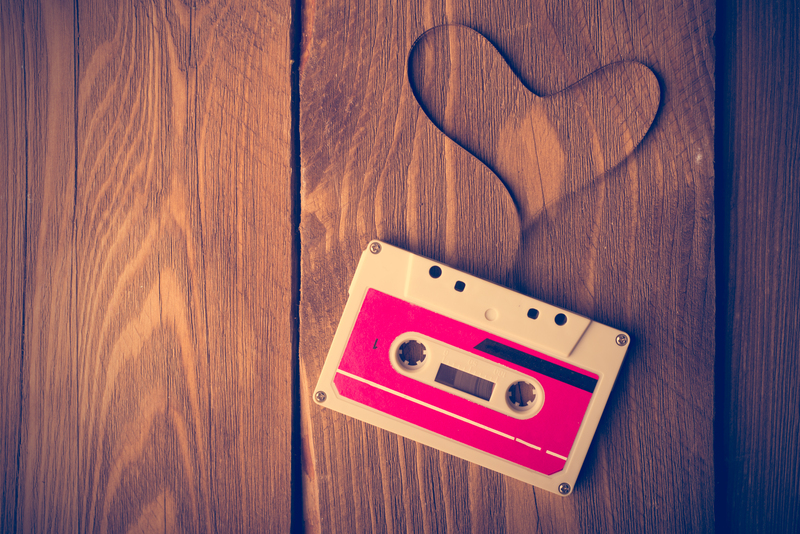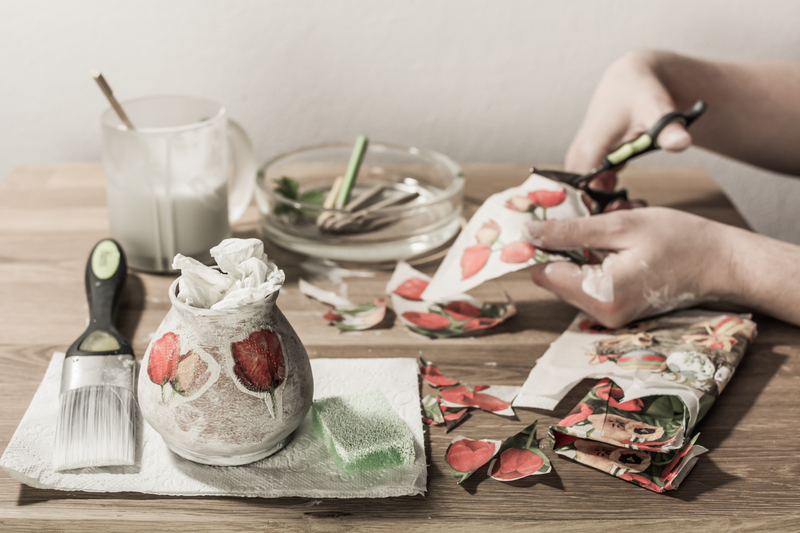Transforming Old Cookware: Recycling and Disposal Options
Do you have rusted pans, chipped pots, or warped baking sheets cluttering your kitchen cabinets? Before tossing these items in the trash, it's crucial to explore responsible and eco-friendly ways to give your old cookware a second life. Transforming old cookware is not only good for the planet but also often surprisingly rewarding. In this comprehensive guide, we'll delve into recycling options, innovative upcycling ideas, proper disposal methods, and answers to the most frequently asked questions about cookware waste.

Why Responsible Disposal of Old Cookware Matters
Disposing of old cookware in the landfill contributes to environmental harm. Most cookware is made from metals, plastics, ceramics, or glass that can take centuries to break down. Metals like aluminum or stainless steel are valuable resources that can be recycled and reused, saving energy and reducing the demand for raw materials. When we throw away cookware irresponsibly, we miss the opportunity to reduce waste and conserve resources.
The Environmental Impact of Cookware Disposal
- Metals can leach toxins into soil and water systems
- Non-stick coatings (like Teflon) may release harmful chemicals as they break down
- Sending bulky items to the landfill increases transportation emissions
- Many components are recyclable and can reduce pressure on mining resources
Let's explore the best ways to manage unwanted kitchenware and transform old pots and pans into something useful or eco-friendly.
How to Recycle Cookware
Most metal cookware (stainless steel, cast iron, aluminum) is recyclable. However, proper recycling methods depend on material type, local recycling rules, and the condition of your items.
Step 1: Identify Cookware Material
Is your cookware made from pure metal, does it have a nonstick or ceramic coating, or is it a glass casserole dish? Understanding the composition of your kitchenware helps you determine where it can be recycled.
- Stainless Steel & Aluminum: Highly recyclable and valuable to scrap yards
- Cast Iron: Extremely durable and 100% recyclable
- Non-Stick (Teflon Coated): May complicate recycling--special handling needed
- Copper: Recyclable, but separate from other metals
- Glass or Ceramic: Usually not accepted in curbside recycling--requires specialty programs
Step 2: Clean Thoroughly
To facilitate recycling, scrub off any food residue, grease, or baked-on grime. This maximizes their value as scrap and ensures acceptance by recycling facilities.
Step 3: Locate a Local Recycler or Scrap Metal Yard
Not all municipal recycling programs accept cookware in curbside bins. Here's what you can do:
- Check with Local Waste Authorities: Visit your city's waste management website or call the recycling hotline.
- Contact Scrap Metal Dealers: Most accept clean cookware--especially valuable metals like copper or aluminum.
- Specialized Drop-Offs: Some areas have periodic collection events or centers for bulky kitchen items.
Step 4: Remove Non-Metal Parts
Handles made from plastic, wood, rubber, or silicone should be detached if possible. Only pure metals are desirable for recycling.
Can You Recycle Non-Stick Cookware?
While traditional non-stick finishes like Teflon make recycling more challenging, many metal recyclers will still accept pans with coating as long as it's not excessive. Some manufacturers and retailers even run mail-back recycling programs for their cookware, especially for items like ceramic- or titanium-coated pans. Reach out to brands like Calphalon or GreenPan to inquire about their take-back services.
Glass and Ceramic Cookware Recycling
Standard curbside recycling does not accept most glass or ceramic cookware. These items contain chemical additives for heat resistance and can contaminate regular glass recycling streams.
- Contact local thrift stores--if the cookware is unbroken, donate it
- Research creative reuse projects (see below)
- Look for specialized recycling centers (sometimes called "ecycle" or "hard-to-recycle" dropoff points)
Donating Usable Cookware
One person's clutter is another's treasure! If your pots, pans, or bakeware are still in decent condition, consider donating them.
- Charity Thrift Stores: Goodwill, Salvation Army, and Habitat for Humanity ReStores often accept cookware
- Shelters and Food Banks: Many community organizations accept cooking essentials
- Colleges and Dormitories: Students or first-time renters may welcome gently-used pots and pans
- Online Marketplaces: List free or low-cost cookware on Nextdoor, Freecycle, or Facebook Marketplace
Always check donation guidelines, and make sure items are clean and safe to use.
Creative Ways to Upcycle Old Cookware
Not all cookware is ready for the scrap heap or recycling facility. With a little imagination, you can transform old pots and pans into useful, decorative, or even whimsical objects for your home or garden. Here are some upcycling ideas to inspire your creative side:
Garden Planters and Tools
- Pots as Planters: Drill drainage holes in old saucepans or Dutch ovens to create unique plant containers for flowers or herbs.
- Bakeware for Seed Starters: Muffin tins, loaf pans, or baking trays can launch your next garden crop.
- Trowel from Broken Spatulas: Bent or broken kitchen utensils work well in garden beds.
Home Decor and Crafts
- Wall Art: Hang arrangements of vintage frying pans or colanders for rustic charm.
- Clocks: Turn an old cast iron skillet into a statement wall clock.
- Candle Holders: Repurpose muffin pans as tea-light holders for cozy ambiance.
- Jewelry Organizers: Attach hooks to a baking rack or colander for earrings and bracelets.
Other Functional Upcycling Ideas
- Bird Feeders: Skillets and small pots become sturdy outdoor bird feeders with a rope and a little creativity.
- Pet Water Bowls: Stainless or glass bowls serve new life as pet watering or feeding stations.
- Tool Storage: Old pots are perfect for holding paintbrushes, artist tools, or craft supplies in your workshop.
Upcycling isn't just fun - it's a way to extend the life of your kitchen essentials and reduce environmental waste.
Disposing of Unrecyclable Cookware Responsibly
Not all cookware can be recycled or reused. Nonstick pans that are heavily scratched, broken glass cookware, or items with hazardous residues may require special handling. Here's how to make sure they don't become an environmental hazard:
- Hazardous Waste Events: Some communities hold annual collection days for hard-to-recycle or chemically coated items.
- Bulk Waste Pickup: For items too large or damaged for household waste bins, schedule a municipal bulky item pickup.
- Landfill as a Last Resort: Place items in the trash only when all other options are exhausted and double-bag sharp or broken objects to protect workers.
Frequently Asked Questions About Old Cookware Recycling
Can I put old pots and pans in my curbside recycling bin?
Usually, no. Most curbside programs reject cookware because of size, shape, and mixed materials. Instead, take them to a scrap metal dealer or a dedicated recycling drop-off.
Are pots and pans with plastic or wooden handles recyclable?
Remove handles whenever possible. If not removable, check with your local scrap yard - many still accept them and will separate materials as needed.
Should I recycle cookware with nonstick coatings?
Contact your recycling facility. Some will accept nonstick cookware in their metal stream; others require you to separate or discard such items. Certain manufacturers offer mail-in recycling for coated cookware.
Can glass cookware (like Pyrex) be recycled?
No, traditional glass cookware cannot go in standard glass recycling bins. Instead, find creative reuse or look for specialized recycling centers that process Pyrex or borosilicate glass.
How do I recycle heavily rusted or broken cookware?
Scrap yards accept heavily rusted metals if you clean off non-metal parts. For broken glass or ceramic, wrap and dispose in your regular trash if reuse is impossible.

Tips for Choosing Eco-Friendly Cookware in the Future
To minimize waste in years to come, invest in cookware that's both durable and recyclable. Consider these features:
- Stainless steel and cast iron offer maximum longevity and recyclability
- Copper cookware is valuable but requires maintenance
- Avoid nonstick coatings if possible, or look for PFOA-free and recyclable brands
- Check if the manufacturer offers recycling or trade-in programs
- Choose versatile, multi-use pieces to reduce total items owned
Summary: Transforming Old Cookware Benefits You and the Planet
Responsibly recycling or upcycling old cookware helps cut landfill waste, preserves natural resources, and might spark your next creative project. Whether you donate, recycle, repurpose, or responsibly dispose of your outdated kitchenware, your efforts play a vital role in building a more sustainable future. Next time you're ready to upgrade your pots and pans, keep these recycling and disposal options in mind to make an eco-friendly difference!
- Recycle metals with your local scrap yard
- Donate usable items to charities and shelters
- Repurpose with fun and functional upcycling crafts
- Dispose of unusable cookware through proper waste channels
Take the extra step - transform your old cookware, reduce waste, and inspire others to do the same!